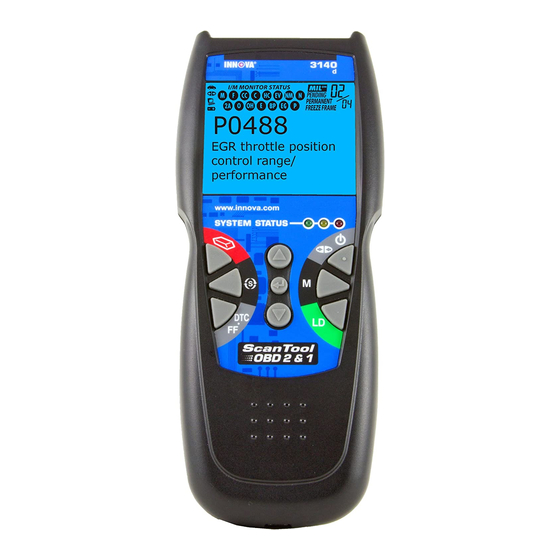
Innova OBD2 Owner's Manual
Scantool
Hide thumbs
Also See for OBD2:
- Owner's manual (88 pages) ,
- Owner's manual (72 pages) ,
- Owner's manual (64 pages)
Table of Contents
Advertisement
Advertisement
Table of Contents
















Need help?
Do you have a question about the OBD2 and is the answer not in the manual?
Questions and answers